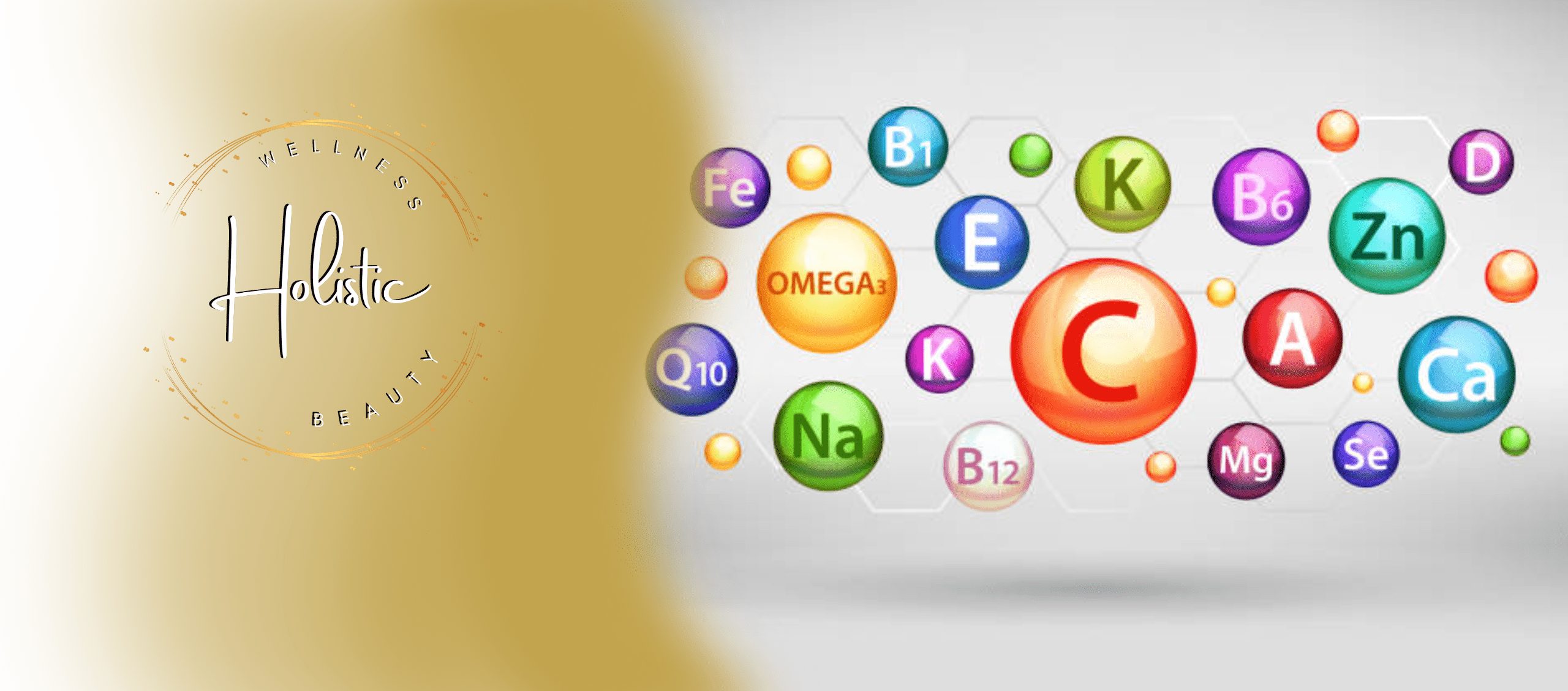What is Tissue Mineral Analysis (TMA)?
Tissue Mineral Analysis (TMA) is a scientific test that measures the mineral content of your hair, revealing your body’s unique nutritional and toxic elements. By understanding your mineral levels, we can identify imbalances and create a personalized wellness plan to help you achieve optimal health.

Why Choose Tissue Mineral Analysis?
- Personalized Insights: Understand your body’s specific needs.
- Identify Imbalances: Detect nutrient deficiencies and toxic elements.
- Holistic Approach: Target root causes of health issues.
- Optimize Health: Improve energy, reduce stress, and enhance overall well-being.
How Does Tissue Mineral Analysis Work?
We take a small hair sample from the back of your head.
The sample is analyzed in a certified lab to measure mineral and toxin levels.
Receive a comprehensive report with your results.
Dr. Crystal creates a tailored plan based on your unique needs
Why Test For Minerals?
Minerals play an integral role in the body’s many intra and extra cellular functions. Their presence is essential for all enzyme, hormone, protein and other biochemical activities.
Other roles of minerals are as catalysts, facilitators or inhibitors of thousands of critical enzymes that control most body functions. Minerals also form the basis for the osmotic balance in the body and for acid-base regulation.
The status of the minerals can quickly provide information about the endocrine, digestive, cardiovascular and other body systems. Mineral deficiencies are known to be associated with dysfunctions of critical body systems.
Mineral deficiencies are among the most common and serious nutritional deficiencies in our population. Depleted soils yield food that is low in minerals. Refining and processing of many foods further reduces their mineral content. Physical and emotional stress, aging, pregnancy and the use of prescription drugs increase the body’s needs for certain minerals. These factors together add up to major mineral deficiencies in much of the population.
Minerals are relatively easy and inexpensive to measure accurately and reliably. In contrast, measuring vitamins, hormones and other factors in the body are often more costly and less accurate.
Toxic metals are known to affect many body systems and organ function. Tissue mineral analysis would be very valuable if it were only used to detect heavy metal poisoning. According to the United States Environmental Protection Agency, in a report of 400 studies completed in August 1979, heavy metal toxicity is the second most prevalent environmental problem in America.
However, hair testing can do much more than detect heavy metals. It can often reveal causes for their accumulation and provide a guide for designing a metabolic program to remove the toxic metals.
“I struggled with fatigue and stress for years. After my TMA at Holistic Wellness Beauty, I discovered critical imbalances. With a personalized wellness plan, my energy levels and mood have dramatically improved!”
“TMA helped me uncover toxic elements affecting my health. The customized recommendations have made a significant difference in my overall well-being.”

MINERAL INFORMATION
Aluminum

Sources Of Aluminum
- beverages from aluminum cans
(soda pop and beer) - food cooked in aluminum cookware
- use of aluminum-containing antacids
- use of anti-perspirants.
- drinking water
(aluminum is frequently added to municipal water) - baking powders
- drying agents in salt and other products
- processed cheese
- bleached flour
- fluoridated water increases leaching of aluminum from aluminum pots and pans.
Today children are often born with elevated aluminum that is passed from mother to fetus through the placenta.
Detection Of Aluminum
There is debate whether blood testing for aluminum has much value. Blood levels definitely do not indicate total body load of aluminum.
Hair aluminum levels appear to correlate well with bone levels of aluminum. Several hair tests may be needed before aluminum is revealed on the test. This is because the aluminum may be tightly bound within body tissues, and several months on a nutrition program may be required to mobilize the aluminum.
How Aluminum Affects Health
| Nervous System – | in animal studies, aluminum blocks the action potential or electrical discharge of nerve cells, reducing nervous system activity. Aluminum also inhibits important enzymes in the brain (Na-K-ATPase and hexokinase). Aluminum may also inhibit uptake of important chemicals by nerve cells (dopamine, norepinephrine, and 5-hydroxytryptamine). |
| Behavioral Effects – | dementia resulting from kidney dialysis related to aluminum toxicity causes memory loss, loss of coordination, confusion and disorientation. |
| Digestive System – | aluminum reduces intestinal activity, and by doing so can cause colic. |
The preceding statements have not been evaluated by the
Food and Drug Administration
This information is not intended to diagnose, treat, cure or prevent any disease.

Sources of Arsenic
- Organic arsenic (arsenate) is found in a variety of foods
- Inorganic arsenate or arsenite: brown rice, pesticides, beer, table salt, water, paint, cosmetics, pigments, rat poison, glass and mirror manufacture, fungicides, wood preservatives, commercial chicken feed
Roles In The Body
Several laboratories believe that arsenic is an essential element in small quantities. Its functions are not clear, but may have to do with growth, and blood formation.
Antagonists
iodine, selenium
Hair Analysis Notes
Arsenite accumulates in the hair tissue, and hair analysis is considered a valuable means of detecting arsenic toxicity.

Sources Of Boron
Leafy vegetables, fruits, nuts, legumes, wine, cider and beer
Functions In The Body
- Increases production of estrogen and testosterone
- Helps prevent osteoporosis and post-menopausal symptoms
- May be necessary for growth (animal experiments)
Hair Analysis Notes
Significance in the hair is unknown

Sources Of Cadmium
- food grown on cadmium contaminated soil – sewage sludge, fertilizers, and irrigation water can contaminate the soil
- large ocean fish – tuna, cod, haddock
- refined and processed foods
- processed meats, cola drinks and instant coffee
- cigarette smoke
- contaminated drinking water
- occupational exposure – battery manufacture, semiconductors, dental materials
- solder used in food cans
- motor oil and exhaust fumes from cars
- artists paints
- air pollution – incineration of rubber tires, plastic and paints
Children today are commonly born with cadmium toxicity passed from mother to child via the placenta.
Detection Of Cadmium
“…Cadmium data from blood have little diagnostic value” (Cranston & Passwater, 1983). This is because cadmium is rapidly removed from the blood soon after it is ingested.
Blood challenge tests can detect cadmium in the blood and arteries.
Cadmium levels in hair show good correlation with cadmium levels in the kidneys. Often, however, several months of nutritional therapy and several hair tests are required before cadmium is revealed in the hair.
How Cadmium Affects Health
| Energy – | cadmium causes strong inhibition of essential enzymes in the Krebs energy cycle. |
| Nervous System – | cadmium inhibits release of acetylcholine and activates cholinesterase. This results in a tendency for hyperactivity of the nervous system. Cadmium also directly damages nerve cells. |
| Bones and Joints – | cadmium alters calcium and phosphorus metabolism, thus contributing to arthritis, osteoporosis and neuromuscular diseases. |
| Cardiovascular System – | cadmium replaces zinc in the arteries, contributing to brittle, inflexible arteries. |
| Digestive System – | cadmium interferes with production of digestive enzymes that require zinc. |
| Male Reproductive System – | prostate problems and impotence can result from cadmium-induced zinc deficiency. |
| Endocrine System – | zinc is required for growth and insulin release. Cadmium can contribute to failure to thrive, delayed growth development and diabetes. |
| Excretory System – | cadmium accumulates in the kidneys, resulting in high blood pressure and kidney disease. |
| Dental – | alterations in calcium and vitamin D activity, caused by cadmium toxicity, can result in cavities and tooth deformities. |
| Psychological – | cadmium toxicity is associated with learning disorders and hyperactivity. This may be due to zinc deficiency, or to inhibition of acetylcholine release in the brain. |
Sources Of Calcium
| Seafood – | sardines, caviar, smelt |
| Animal products – | egg yolks |
| Nuts/seeds – | almonds, sesame seeds, filberts |
| Vegetables – | kale, collards, mustard greens, turnip greens |
| Dairy – | cheeses, milk |
| Miscellaneous – | molasses, kelp, brewer’s yeast, torula yeast |
Roles In The Body
About 99% of our calcium is found in bone structures. However, calcium is essential for four other critical roles:
| Cell Membrane Regulation – | affecting cell permeability, muscle contraction and nerve impulse conduction. |
| Body Fluid Regulation – | affecting blood clotting, acidity and alkalinity. |
| Regulation of cell division | |
| Regulation of hormone secretion – | insulin |
Functions Of Calcium
| Circulatory – | excites the heart, constricts small blood vessels |
| Excretory – | inhibits water loss |
| Digestive – | in excess, is constipating |
| Nervous – | slows nerve impulse transmission |
| Reproductive – | required for normal cell division |
| Endocrine – | inhibits release of thyroid-releasing and other pituitary hormones |
| Blood – | stimulates blood formation and is required for blood clotting |
| Muscular – | reduces muscular irritability and contractibility |
| Skeletal – | main component of bone |
| Metabolic – | required for phosphorus metabolism and energy production in the Krebs cycle |
| Detoxification – | inhibits uptake of lead, antagonizes cadmium |
| Cellular – | decreases permeability of cells to sodium and potassium ions |
Nutrients That Are Synergistic With Calcium
| Absorption – vitamin A and D, stomach acidity, protein in diet |
| Utilization – magnesium, copper, vitamin C |
Antagonistic Nutrients
| Absorption – fluoride, low stomach acidity, low protein in diet, phosphorus in excess |
| Utilization – lead, cadmium, sodium, potassium, high protein diet increases calcium loss in urine |
Hair Analysis Notes
High Hair Calcium:
- usually indicates that calcium is leaving the bones and accumulating in the soft tissues of the body
- high calcium is associated with a slow oxidation rate
- good indicator of hidden copper toxicity
- high calcium on a retest often means the body is eliminating excess calcium
Low Hair Calcium:
- a low calcium level usually means calcium is being lost in the urine
- associated with fast oxidation rate – alarm stage of stress
- often associated with copper deficiency
Reasons For Calcium Supplementation
- to slow the oxidation rate
- to help detoxify lead and cadmium
- to balance key mineral ratios
Sources Of Chromium
| Seafood – | oysters |
| Meats – | calves’ liver, egg yolk |
| Nuts/seeds – | peanuts |
| Fruit – | grape juice |
| Dairy – | American cheese |
| Grains – | wheat and wheat germ |
| Miscellaneous – | brewer’s yeast, black pepper, molasses |
Roles In The Body
- Glucose tolerance factor – chromium is involved in maintaining blood sugar levels and energy levels.
- Cholesterol regulation
- Other possible roles involved in the synthesis of DNA
Functions Of Chromium
| Circulatory – | serum cholesterol regulation |
| Digestive – | sugar and carbohydrate utilization (via insulin) |
| Nervous – | maintenance of nervous system by regulation of blood sugar |
| Eyes – | corneal clarity |
| Muscular – | supplies energy for muscular contraction |
| Skeletal – | essential component of bones and hair |
| Protective – | immune system (via insulin) |
| Metabolic – | fat, protein, and carbohydrate metabolism regulation |
Synergetic Nutrients
insulin, glucose, magnesium, vitamin B6, zinc, manganese oxalates, salicylates
Antagonistic Nutrients
| Absorption – | iron, manganese, zinc, vanadium, phytates |
| Metabolic – | glucagon |
Hair Analysis Notes
High Hair Chromium:
- a high chromium level is often indicative of a loss of chromium through the hair, and is frequently caused by an iron toxicity or another mineral imbalance problem.
Low Hair Chromium:
- supplementing chromium when chromium reading is low, is frequently helpful in correcting symptoms of fatigue, or sugar and carbohydrate intolerance.
- excessive iron intake is a frequent cause of both high and low chromium levels.1

Sources Of Cobalt
Meats (as vitamin B12)
Roles In The Body
Needed for the formation of vitamin B12 – blood formation, nervous system
Sources Of Copper
| Seafood – | oysters, crabs, bluefish, perch, lobster |
| Meats – | veal, duck, lamb, pork, beef liver and kidneys |
| Nuts/seeds – | almonds, pecans, walnuts, filberts, brazil nuts, sesame, sunflower, pistachio |
| Vegetables – | soybeans |
| Grains – | wheat germ and bran |
| Miscellaneous – | yeast, gelatin, bone meal, corn oil, margarine, mushrooms, chocolate |
| Other sources – | copper water pipes, copper sulfate added to drinking water, copper compounds used in swimming pools, mineral supplements (especially prenatal vitamins), copper cookware and tea kettles, birth control pills, copper intrauterine devices, vegetarian diets, stress, exhaustion of the adrenal glands |
Many children are born today with excessive copper levels passed to them from their mothers in utero.
Roles In The Body
- Energy production
- Female reproductive system
- Blood formation
Functions Of Copper
| Circulatory – | structure of blood vessels, aorta and heart muscle |
| Blood – | formation of hemoglobin |
| Nervous – | maintenance of the myelin sheath on nerves |
| Reproductive – | essential for fertility, menstrual cycle |
| Endocrine – | synthesis of stimulatory neurotransmitters |
| Muscular/skeletal – | bone and connective tissue structure |
| Immune system – | necessary for the immune system |
| Integumentary – | needed for skin, hair, nails and pigments |
| Energy – | energy production (the electron transport system) |
Synergetic Nutrients
| Absorption – proteins |
Antagonistic Nutrients
| Absorption – zinc, manganese, iron, calcium, molybdenum, sulfur, mercury, cadmium, vitamin C |
| Utilization – zinc, vitamin C, vitamin B6, sulfur, molybdenum, manganese, iron |
Hair Analysis Notes
- Bio-unavailable copper: Often copper status can be tricky to assess. Copper may be present, but unavailable for use in the body. This occurs any time adrenal gland activity is low.
- Copper and Oxidation Type: Fast oxidizers generally are deficient in copper, while slow oxidizers usually have either high copper or bio-unavailable copper.
- Hidden Copper Toxicity: Copper is often normal on hair tests, but may actually be locked in body tissues. Test indicators of a hidden copper imbalance are:
- Calcium level greater than 75 mg%
- Potassium level less than 3 mg%
- Sodium/potassium ratio less than 2.2:1
- Mercury toxicity often indicates a hidden copper toxicity
- Copper level less than 1.0 mg%
- Zinc/copper ratio less than 6:1
Reasons For Supplementation With Copper
- to raise a low sodium/potassium ratio
- to enhance retention of calcium in tissues
Sources Of Iron
| Seafood – | clams, oysters | |
| Meats – | liver and kidneys, beef, reindeer meat | |
| Nuts/seeds – | pistachio, pinon nuts, black walnuts, sesame seeds, sunflower seeds, pumpkin seeds | |
| Vegetables – | Irish moss, chives, parsley, soybeans | |
| Grains – | wheat germ and bran, rice bran | |
| Miscellaneous – | red wine, black strap molasses, sorghum syrup, bone meal, yeast | |
Roles In The Body
| Oxygen Transport – | iron is part of the hemoglobin molecule that carries oxygen in the blood | |
| Cellular Energy Production – | iron is required in the final steps of the production of energy from food | |
| Removal of Harmful Free Radicals – | catalase enzyme requires iron | |
Synergetic Nutrients
| Absorption – | acid foods, animal foods, vitamin C, alcohol, glucose and other sugars |
| Utilization – | copper, vitamin B12 |
Antagonistic Nutrients
| Absorption – | phytates, phosphate, egg protein, manganese, zinc, nickel, chromium, copper, calcium, magnesium, cadmium, vegetarian diets |
Hair Analysis Notes
Iron is referred to as the strength mineral
High Hair Iron:
- often associated with feelings of anger and hostility
- more often seen in fast oxidation
- often associated with high aluminum levels
- can be due to an iron loss due to destruction of body cells
- iron toxicity can be due to iron cookware or excessive iron in drinking water
Low Hair Iron:
- most often associated with a slow oxidation rate
- common to see iron levels around 1.0 mg%
- low hair iron does not necessarily indicate anemia
- low iron often seen with symptoms of fatigue
- taking iron tablets will not necessarily raise iron levels
Reasons For Iron Supplementation
- to raise low sodium levels
- to increase a low oxidation rate
- to lower elevated manganese levels
Sources Of Lead
| ceramic glazes | lead water pipes |
| cigarette smoke | leaded gasoline |
| colored ink | manufacture of batteries |
| food cans soldered with lead | mine smelting industries |
| Grecian Formula and Youth Hair | pesticide residues |
| hair dyes | water contaminated with lead from industrial |
| lead-based paint | waste |
- Lead and other heavy metals are contaminating baby foods like puree, juice and teething cookies, i.e., Arrowroot cookies, according to Food and Drug Administration data and recent testing by Consumer Reports.
- Root vegetables: Sweet potatoes and carrots
- Children can also be born with elevated lead, passed through the placenta from their mothers.
- Diets deficient in calcium, magnesium, or iron increase lead absorption.
Detection Of Lead
- Blood lead testing is not accurate in detecting chronic lead toxicity. Within 30 days of exposure, most lead is removed from the blood and stored in body tissues.
- Blood challenge tests can detect a certain amount of lead poisoning.
- Hair testing has been shown by the Environmental Protection Agency to be a good method of testing for lead poisoning.
- Several hair tests may be necessary before elevated lead levels are revealed.
How Lead Affects The Body
| Blood – | inhibits enzymes associated with hemoglobin synthesis, and increases the rate of destruction of red blood cells. End result is fatigue. |
| Bones – | lead is incorporated into bone in preference to calcium. |
| Brain – | can inhibit copper-dependent enzymes needed for neurotransmitters (dopamine, epinephrine, norepinephrine). End result is hyperactivity. |
| Energy – | inhibits copper and iron-dependent enzymes in the Krebs cycle required for energy production. End result is fatigue. |
| Kidneys – | lead can raise uric acid levels and impair kidney function. End result is gout. |
| Minerals – | lead displaces and can cause deficiency or bio-unavailability of calcium, zinc, manganese, copper, and iron. |
| Thyroid Gland – | lead interferes with iodine uptake by the thyroid, and can inactivate thyroxin, the thyroid hormone. |

Sources Of Lithium
- Small amounts are found in a wide variety of foods
- Lubricating grease
- Batteries
- Ceramics and glass
- Used in medication to treat bipolar disorder
Functions Of Lithium
- Decreases manic symptoms in manic-depressive patients
- May modulate the conversion of essential fatty acids into prostaglandins
- May stabilize serotonin transmission
- Anti-aggressive action
Roles In The Body
- Research by Frazier found that those patients who were helped by lithium experienced increased uptake of sodium through their cell membranes.
- According to Sheard, lithium can replace sodium in the cells, and its structure resembles calcium and magnesium. It appears to have the same stabilizing effect on nervous cells as calcium and magnesium.
Hair Analysis Notes
- Lithium appears to lower sodium levels. This would correlate with the research by A. Frazier.
- The meaning of hair lithium levels is a topic of research.
Indications For Supplementation
Aggressive behavior, manic-depression and some cases of depression.
Sources Of Magnesium
| Nuts – | almonds, brazil nuts, cashews | |
| Vegetables – | soybeans, parsnips | |
| Grains – | buckwheat, wheat bran, wheat germ, other grains | |
| Miscellaneous – | chocolate, cocoa, molasses, brewer’s yeast, kelp | |
Roles In The Body
Sixty percent of tissue magnesium is located in the skeleton. The rest is within the cells, where it performs very essential functions.
| Regulation of Cell Membranes – | permeability, muscular contraction, nerve impulse conduction and antagonism to calcium. | |
| Enzyme Activation within the cells – | magnesium is essential for energy production, and protein synthesis. | |
Functions Of Magnesium
| Excretory – | prevention of kidney stones | |
| Digestive – | laxative | |
| Nervous – | maintains nerve conduction | |
| Muscular – | prevents tissue calcification, needed for muscle contraction | |
| Skeletal – | required for bone formation | |
| Metabolic – | required for energy production, for glucose and fat metabolism, and for protein synthesis | |
| Detoxification – | required for liver activity | |
Nutrients That Work With Magnesium
- Vitamin D, lactic acid, lactose, high protein diet
- Potassium is a magnesium synergist in many enzyme systems
Hair Analysis Notes
| Absorption – | phytates found in grains, fluoride, phosphorus, low-protein diet | |
| Utilization – | calcium. Drinking alcohol lowers magnesium levels. Junk food diets are often low in magnesium | |
Hair Analysis Notes
High Hair Magnesium:
- often associated with a SLOW oxidation rate, fatigue and depression.
- a high magnesium level often indicates that magnesium is being lost through the hair, resulting in deficiency symptoms such as anxiety and hyper-irritability.
Low Hair Magnesium:
- often associated with a FAST oxidation rate, anxiety, irritability and high-strung personality.
Reasons For Magnesium Supplementation
- to prevent calcium build-up in body tissues
- to enhance energy production and raise low sodium levels
Sources Of Manganese
| Meats – | snails, egg yolk | |
| Nuts/seeds – | sunflower, coconuts, peanuts, pecans, walnuts, chestnuts, hazelnuts, almonds, brazil nuts | |
| Fruits – | blueberries, olives, avocados | |
| Vegetables – | corn, corn germ, parsley, legumes | |
| Grains – | wheat, wheat germ and bran, rice, barley, oats, buckwheat, rye | |
| Miscellaneous – | kelp, cloves, tea | |
Roles In The Body
- Energy Production, essential for
- Glucose tolerance levels, necessary for maintaining
- Tendons and ligaments, maintains integrity of
- Bone development, essential for
Functions Of Manganese
| Nervous system – | synthesis of neurotransmitters | |
| Reproductive system – | fertility | |
| Endocrine system – | required for normal adrenal and thyroid gland activity | |
| Skeletal – | tendons, ligaments, connective tissue | |
| Metabolic – | energy production, glucose tolerance, utilization of fats and carbohydrates | |
| Detoxification – | involved in superoxide dismutase | |
Synergetic Nutrients
zinc, choline, vitamin K
Antagonistic Nutrients
| Absorption – | calcium, phosphorus, iron, soy protein | |
| Metabolic – | copper, magnesium, iron, vanadium | |
Hair Analysis Notes
Manganese is called the maternal mineral because manganese-deficient animals cease to care for their young.
High Hair Manganese:
- may be due to manganese toxicity derived from drinking water containing excessively high levels of manganese.
Low Hair Manganese:
- low hair manganese levels are extremely common. However, if the manganese level is below .03 mg% it is considered very low.
- low manganese usually correlates with slow oxidation and low energy levels.
Reasons For Manganese Supplementation
- to raise low sodium levels
- to lower excessive iron, copper or other toxic metal levels
- to correct a low sodium/potassium ratio

Sources Of Mercury
- dental amalgam (silver fillings)
- tuna fish and swordfish
- contaminated drinking water
- seeds and vegetables treated with mercurial fungicides
- medications – diuretics, Mercurochrome, Merthiolate, Preparation H, contact lens solution
- occupational exposure – felt, algicides, floor waxes, adhesives, fabric softeners, manufacture of paper, production of chlorine
- children can be born with mercury toxicity that is passed through the placenta from their mothers. Mercury can also be passed to children in breast milk.
Detection Of Mercury
Tests recognized as valid for detecting chronic mercury toxicity include hair analysis and urine challenge tests. The latter is a urine test performed after giving a dose of a chelating agent. A simple urine or blood test without a chelator will usually not reveal mercury toxicity unless the poisoning is acute.
Copper toxicity and zinc deficiency are often associated with mercury toxicity.
How Mercury Affects Health
| Energy – | mercury compounds inhibit the enzyme ATPase, which impairs energy production in all body cells. | |
| Nervous System – | degeneration of nerve fibers occurs, particularly the peripheral sensory nerve fibers. In addition to sensory nerve damage, motor conduction speed was reduced in persons with high hair mercury levels. The most common sensory effects are paresthesia, pain in limbs, and visual and auditory disturbances. Motor disturbances results in changes in gait, weakness, falling, slurred speech, and tremor. Other symptoms are headaches, rashes and emotional disturbances. |
|
| Endocrine System – | mercury has been shown to concentrate in the thyroid and pituitary glands, interfering with their function. Impairment of adrenal gland activity also occurs. | |
| Kidneys – | mercury can accumulate in the kidneys, where it may cause kidney damage. | |
Sources Of Molybdenum
| Animal Products -meats – | pork, lamb, beef liver | |
| Nuts/seeds – | sunflower seeds | |
| Vegetables – | soybeans, lima beans, lentils, peas | |
| Grains – | buckwheat, oats, barley, wheat germ, sorghum | |
| Occupational sources – | working around metal fumes. Molybdenum is used to make stainless steel, photographic chemicals, lubricants, pigments and reagents | |
Metabolism
- In the blood, molybdenum is most commonly found in a complex with copper.
- Molybdenum concentrates in the liver, kidney, bone and significant amounts are found in the dental enamel and hair.
- The main route of excretion is through the kidneys.
Roles In The Body
- Molybdenum is an ultra-trace mineral.
- Molybdenum is required for xanthine oxidase, an enzyme involved in the formation of uric acid.
- In animals, another enzyme, aldehyde oxidase, also requires molybdenum. This enzyme is involved in detoxification.
- Molybdenum has been shown in animals to be involved with fat, purine and sulfate metabolism.
- It is also involved in detoxification and
intimately involved in copper metabolism.
Synergetic Nutrients
- Molybdenum is considered to be synergistic with iron and sulfur.
- Molybdenum also raises sodium levels and is synergistic with vitamins B1 and B3 (xanthine oxidase).
Antagonistic Nutrients
- Molybdenum is a powerful copper antagonist. Most copper antagonists such as zinc displace copper. A unique property of molybdenum is that it binds or complexes directly with copper and facilitates its removal. This enables copper to be removed from the body without the common side effects that often occur with copper removal.
- Another reason for this action is that molybdenum raises sodium, offsetting the sodium-lowering effect that occurs when copper is eliminated.
- Molybdenum absorption is antagonized by copper, sulfur, methionine and a high-protein diet.
- Molybdenum metabolism is antagonized by manganese, zinc and at times sulfur.
Sources Of Nickel
- cigarette smoking
- commercial peanut butter
- herring
- hydrogenated vegetable oils
- imitation whip creams
- kelp
- imitation whip creams
- margarine
- nickel plating
- oysters
- tea
- unrefined grains and cereals
- vegetable shortening
- vegetarian products
How Nickel Affects The Body
| Kidneys – | nickel has a tendency to accumulate in the kidneys. | |
| Hormone, Lipid and Membrane Metabolism – |
It is believed that nickel has some physiological role related to these functions. |
|
-
Hair Analysis Notes
- Normal nickel is about 0.1 mg% or lower.
- More research is needed regarding the physiological roles and significance of hair levels of nickel.
Sources Of Phosphorus
| Seafood – | tuna, mackerel, pike, red snapper, salmon, sardines, whitefish, scallops, shad, smelt, anchovies, bass, bluefish, carp, caviar, eel, halibut, herring, trout | |
| Meats – | liver (beef, chicken, hog, lamb), rabbit, sweetbreads, turkey, beef brains, chicken, eggs, egg yolk, lamb heart, kidney | |
| Nuts/seeds – | pinon, pistachios, pumpkin, sesame, sunflower, walnuts, almonds, brazil nuts, cashews, filberts, hickory, peanuts, pecans | |
| Vegetables – | chickpeas, garlic, lentils, popcorn, soybeans | |
| Dairy – | cheeses | |
| Grains – | wheat bran and germ, wild rice, buckwheat, millet, oats, oatmeal, brown rice, rice bran, rye, wheat | |
| Miscellaneous – | chocolate, kelp, yeast, bone meal | |
Roles In The Body
- Bone structure – 80-85% of phosphorus in the body is located in the bones and teeth
- Energy production – (ATP – adenosine triphosphate and ADP – adenosine diphosphate)
- Cell membranes – (as phospholipids)
- Genetic reactions – in DNA – deoxyribonucleic acid and RNA – ribonucleic acid
- Buffering agent, to maintain osmotic pressure
Functions Of Phosphorus
| Digestive – | regulates absorption of calcium and a variety of trace elements. Phosphorus in excess has a laxative action | |
| Nervous – | source of adenosine triphosphate (ATP), component of the myelin sheath | |
| Endocrine – | interacts with vitamin D | |
| Blood – | red blood cell (RBC) metabolism | |
| Muscular – | adenosine triphosphate (ATP) needed for muscle contraction | |
| Skeletal – | component of bone and teeth | |
| Immune – | adenosine triphosphate (ATP) for leukocytes | |
| Metabolic – | energy production via phosphorylation reactions | |
| Detoxification – | in liver – via adenosine triphosphate (ATP) | |
Synergetic Nutrients
| Absorption – | sodium, potassium, low calcium diet, vitamin D, parathyroid hormone, high fat diet | |
| Metabolic – | calcium, magnesium, B-complex vitamins (in energy production) | |
Antagonistic Nutrients
| Absorption – | calcium, aluminum, iron, magnesium, vegetarian diets,vitamin D deficiency |
|
Hair Analysis Notes
High Hair Phosphorus:
- An elevated phosphorus level is frequently indicative of excessive protein breakdown of body tissues. As proteins break down, phosphorus is released.
- Phosphorus levels may increase temporarily as toxic metals are being eliminated in the course of a nutrition program.
- Very high phosphorus (greater than 25 mg%) can indicate a serious metabolic disturbance.
Pubic hair samples often show elevated phosphorus readings. This is a characteristic of pubic hair.
Low Hair Phosphorus:
- A low phosphorus level is frequently associated with inadequate protein synthesis.
- Although most diets are adequate in phosphorus, those on low-protein diets or vegetarians may have a low phosphorus intake.
- Zinc is required for protein synthesis. Often a low phosphorus level is associated with a zinc deficiency, cadmium toxicity, or zinc loss. When these imbalances are corrected, the phosphorus level improves.
- A low phosphorus level may be due to poor digestion or assimilation of protein. This may be due to digestive enzyme deficiency, low hydrochloric acid level, or other factors.
Sources Of Potassium
| Seafood – | halibut, herring, lingcod, sardines | |
| Meats – | goose | |
| Nuts/seeds – | pecans, sesame, sunflower, walnuts, almonds, brazil nuts, cashews, chestnuts, filberts, peanuts | |
| Fruits – | avocados, dates, figs, prunes, raisins | |
| Vegetables – | watercress, garlic, horseradish, lentils, parsley, potatoes, spinach, artichokes, lima beans, beet greens, swiss chard, collards | |
| Grains – | buckwheat, rye, wheat bran | |
| Miscellaneous – | chocolate, molasses, mushrooms, kelp, yeast, salt substitutes | |
Roles In The Body
Potassium has many roles, especially intracellular fluid balance, and cell membrane effects such as muscle contraction, nerve impulse conduction, and cell permeability.
Functions Of Potassium
| Circulatory – | lowers heart rate, dilates arteries, can reduce blood pressure | |
| Excretory – | maintains acid-base balance | |
| Digestive – | increases digestive tract activity | |
| Endocrine – | helps raise aldosterone and other hormones | |
| Metabolic – | involved in carbohydrate metabolism | |
Synergistic Nutrients
magnesium
Antagonistic Nutrients
calcium, processed food diets are low in potassium
Hair Analysis Notes
Potassium is known as the follow-through mineral. Hair must not be washed at the laboratory to obtain accurate potassium readings.
High Hair Potassium:
- indicates high sugar and glucocorticoid levels.
- very high potassium can be a potassium loss due to excessive breakdown of body cells.
Low Hair Potassium:
- indicates adrenal gland exhaustion.
- very low potassium is associated with allergies, fatigue, low blood sugar, sweet cravings, and low blood pressure.
Reasons For Potassium Supplementation
- to lower a high sodium/potassium ratio
- to enhance energy production
Sources Of Selenium
| Seafood – | oysters, tuna, mackerel, herring, lobsters, scallops, shrimp, pike, trout, carp, cod, flounder, salmon | |
| Meats – | liver, kidney, heart, beef, lamb, egg, pork | |
| Nuts/seeds – | brazil nuts, cashews, peanuts, walnuts | |
| Grains – | wheat germ and bran, brown rice, barley | |
| Miscellaneous – | brewer’s yeast | |
Roles In The Body
- At the molecular level selenium as a sulfhydryl agent, anti-oxidant (glutathione peroxidase), and as a synergist to vitamin E.
- At the cellular level selenium is involved in the destruction of peroxides, protection of cell membranes, as an electron transfer agent, and in glutathione metabolism.
- Selenium helps maintain the circulatory system, digestive organs, and reproductive system. It is also involved with heavy metal detoxification.
Functions Of Selenium
| Circulatory – | needed for the heart muscle | |
| Excretory – | protection from toxic metals | |
| Respiratory – | involved in oxygen transport | |
| Digestive – | intestinal homeostasis | |
| Nervous – | protection from mercury and cadmium | |
| Reproductive – | protection against birth defects | |
| Endocrine – | synergistic with the sex hormones | |
| Blood – | stabilizes the red blood cell membranes | |
| Integumentary – | helps maintain hair, skin and nails | |
| Immune – | enhances immune system in animals | |
| Metabolic – | lipid and sulfhydryl metabolism; may prevent liver necrosis | |
| Detoxification – | helps remove mercury, cadmium, silver, arsenic and peroxides | |
Nutrients That Are Synergistic With Selenium
| Metabolic – | vitamin C, vitamin E, glutathione | |
| Absorption – | amino acids, peptides, proteins | |
Antagonistic Nutrients
| Metabolic – | silver, arsenic, mercury, cadmium, titanium | |
| Absorption – | copper, mercury, silver, sulfate | |
Hair Analysis Notes
High Hair Selenium:
- can be due to the use of shampoos containing selenium
- may indicate a loss of selenium through the hair
Low Hair Selenium:
- may be due to dietary deficiency, which is relatively common, especially among those who eat refined foods
Reasons For Selenium Supplementation
Selenium may be given to help prevent or correct cadmium, mercury, or arsenic toxicity. Selenium is an anti-oxidant and may be given to help protect against free radical damage. Note that excessive selenium supplementation may be toxic.
In addition, there is extensive research presently being conducted on the functions of selenium and iodine with regard to thyroid function and it is becoming clear that there is an interaction between the two that should be noted.
Sources Of Sodium
| Seafood – | tuna, clams, caviar, lobster, sardines, scallops, shrimp | |
| Meats – | brains, eggs, beef kidneys, beef liver | |
| Vegetables – | beet greens, celery, Swiss chard, olives, peas | |
| Dairy – | butter, buttermilk, cheeses | |
| Miscellaneous – | pickles, table salt, soy sauce, steak sauce, kelp, brewer’s yeast, drinking water from water softeners. Processed and fast foods are often high in salt content | |
Roles In The Body
Sodium is an extracellular element, involved in fluid balance, regulation of blood pressure and cell membrane permeability.
Functions Of Sodium
| Circulatory – | maintenance of blood pressure, increases heart rate | |
| Excretory – | helps maintain acid-base balance | |
| Digestive – | required to produce hydrochloric acid in the stomach | |
| Endocrine – | reduces aldosterone secretion | |
| Detoxification – | keeps toxic substances in solution | |
Synergistic Nutrients
| Absorption – | glucose | |
| Metabolic – | manganese, chromium, vitamin C, E and B complex | |
Antagonistic Nutrients
| Absorption – | calcium | |
| Metabolic – | zinc, choline, inositol | |
Hair Analysis Notes
Sodium is referred to as the volatility mineral
High Hair Sodium:
- indicative of excessive adrenal gland activity
- often indicates excitability and fast oxidation
- sodium levels can be elevated by toxic metals, especially cadmium
Low Hair Sodium:
- excellent indicator of impaired adrenal gland activity
- very low sodium is indicative of exhaustion
- hair must not be washed at the laboratory for accurate readings
Supplementing Sodium
Salt consumption can be harmful if excessive, or if blood pressure is elevated. Slow oxidizers with low sodium levels and low blood pressure often feel better when they use sea salt or soy sauce in cooking.
Sources Of Zinc
| Seafood – oysters, herring | |
| Meats – beef, lamb, beef and pork liver | |
| Nuts/seeds – sunflower, pumpkin | |
| Dairy – cheese | |
| Grains – wheat germ | |
| Miscellaneous – brewer’s yeast, maple syrup, bone meal, gluten, tea |
Roles In The Body
- Activator of many key enzymes.
- Growth and development
- Male reproductive system
- Insulin production and secretion
- Prevention of cadmium and copper toxicity
Functions Of Zinc
| Circulatory – maintenance of artery walls | |
| Respiratory – removal of carbon dioxide and maintenance of acid-base balance | |
| Digestive – production of digestive enzymes, and normal liver function | |
| Nervous – essential for brain development and neurotransmitters | |
| Special senses – appetite regulation, smell and taste | |
| Reproductive – testes, ovaries, prostate, male fertility | |
| Endocrine – insulin and pituitary gonadotropin secretion | |
| Blood – red blood cells and blood proteins | |
| Skeletal – bone integrity, prevention of osteoporosis | |
| Skin – required for normal integrity of hair, nails, and skin | |
| Protective – required for wound healing and integrity of the immune system | |
| Metabolic – normal carbohydrate and protein metabolism | |
| Detoxification – assists in removing toxic accumulation of cadmium and copper | |
| Psychological – powerful mood stabilizer and ‘sedative’ mineral |
Synergetic Nutrients
magnesium, vitamin A, D, E, B6, high-protein diet
Antagonistic Nutrients
| Absorption – copper, cadmium, iron, chromium, manganese, selenium, phytic acid, vegetarian diets, soy, cereals, fiber in diet | |
| Metabolic – copper, iron, cadmium |
Hair Analysis Notes
Zinc is considered a “masculine” mineral, because of its importance in the formation of male sexual hormones.
High Hair Zinc:
- An elevated zinc level is commonly due to a loss of zinc from the body tissues. In these cases, zinc supplements will often be recommended.
- Zinc levels may appear high to help compensate for copper toxicity. Thus high zinc can be a tipoff of a hidden copper toxicity.
- Use of Head and Shoulders shampoo occasionally results in an elevated zinc reading.
- Cadmium toxicity can cause a zinc reading to appear high.
Low Hair Zinc:
- Zinc will often read low if the sodium/potassium ratio is less than 2.5:1. In this case, it is not always wise to give much zinc.
- Zinc is commonly low in “fast” oxidizers.
- Very low zinc levels are often associated with emotional instability and with problems of growth and development in children.
















